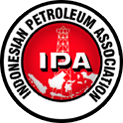Publications
One million years from the Upper Arang Formation, West Natuna Basin, implications for reservoir distribution and facies variation in fluvial deltaic deposits
Proceedings Title : Proc. Indon. Petrol. Assoc., 29th Ann. Conv., 2003
The Middle Miocene, Upper Arang Formation, West Natuna Basin, offshore Indonesia is an important petroleum system contributing dry gas to two gas contracts supplying Singapore and Malaysia over the next 20 years. The Formation was deposited in a predominantly perhumid environment with reservoirs comprising fluvial deltaic deposits with the gas sourced from numerous, inter-bedded coals. Periodic marine flooding events provide intra-formational seals.A series of horizon slices over a 1 million year geological time interval, at a depth of approximately 4,800 ft. have been generated from two large 3D surveys, including coverage over the Belanak Field. This geological period equates to a 300 ft well section, but more significantly, to only a 120 msec. two way time seismic interval. The slices have produced excellent images of environments of deposition and clearly illustrate how major changes in reservoir distribution and facies occur over this interval. The seismic data illustrates the lateral and vertical complexity of these reservoirs, which is not resolved by limited well penetrations. The images have been used not only in the reservoir model for the Belanak Field but also as analogues for adjacent fields, for both the Upper Arang Formation and deeper reservoirs within the Oligocene. The 3D data is facilitating optimal development of these highly complex reservoirs.
Log In as an IPA Member to Download
Publication for Free.
or
Purchase from AAPG Datapages.
